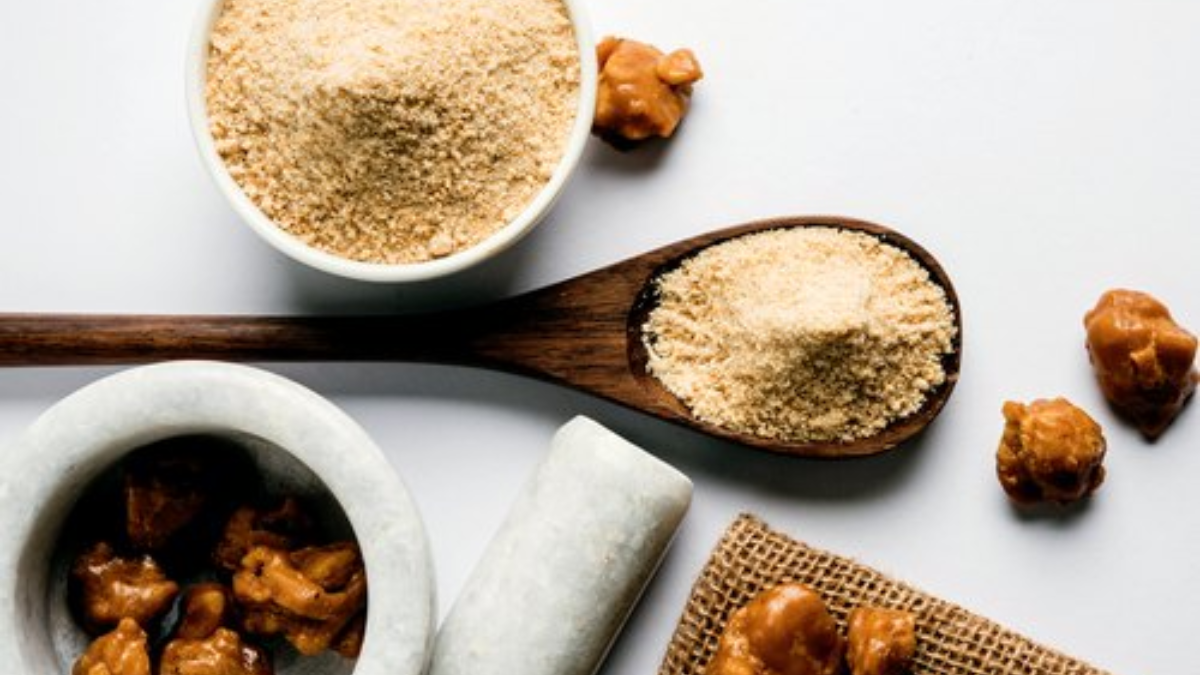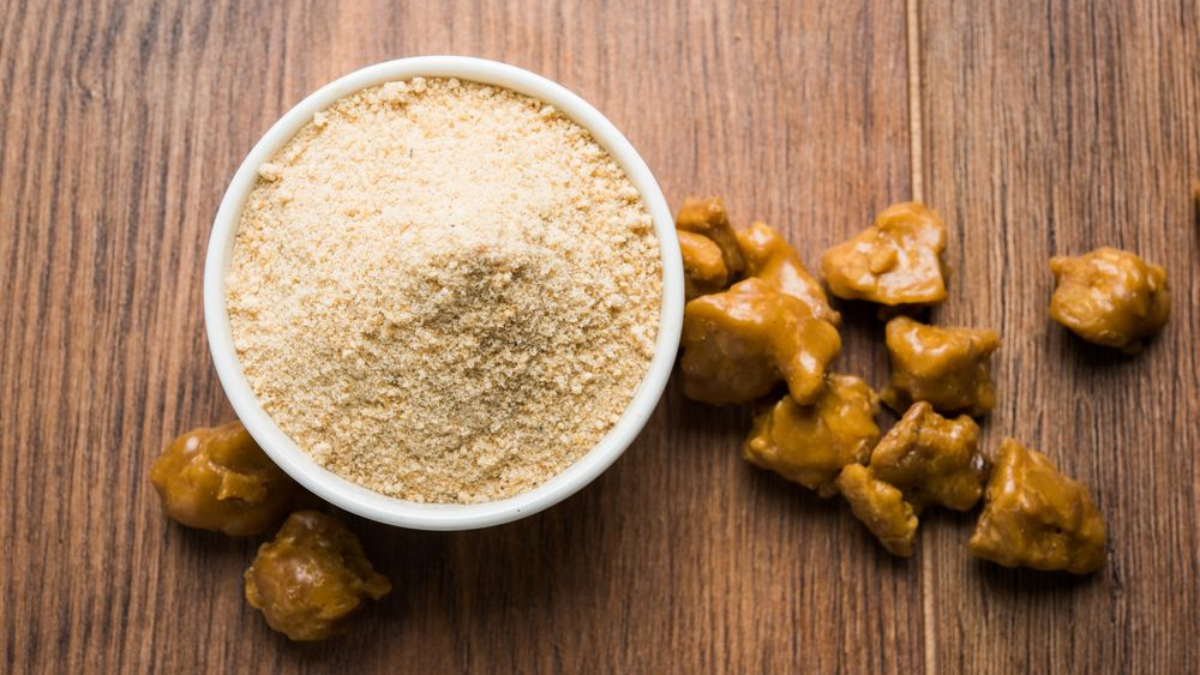People usually use Asafetida for ailments including respiratory or throat issues, digestive issues, or for women to start their periods again when they have stopped for some other cause. To treat corns and calluses, Asafetida is occasionally administered directly to the skin. However, there isn’t any solid scientific evidence to back this up. Asafetida releases strong sulfur compounds that smell like garlic and onions when crushed and cooked with food.
Asafetida Nutrition Facts
The current study looked into the potential impacts of Ferula asafetida resin on the CYP2D6 and CYP3A4 drug-metabolizing enzymes in humans. Dextromethorphan (DEX), which CYP2D6 and CYP3A4 metabolize to produce dextrorphan (DOR) and 3-methoxymorphinan (3-MM), was employed as a marker to evaluate the metabolic activity of these enzymes. In an in vitro experiment, DEX was incubated with human liver microsomes, NADPH, and alcohol extract of Asafetida in the presence or absence.
Healthy human participants were given a single dosage of DEX alone (phase-I) for the clinical investigation. They repeated it following a washout period and a four-day asafetida treatment (phase-II). In an in vitro investigation, Asafetida exhibited a concentration-dependent suppression of DOR production and a 33% increase in the DEX/DOR urine metabolic ratio. For CYP3A4, low Asafetida concentrations (10, 25, and 50 g/ml) boosted the synthesis of 3-MM in microsomes, whereas the concentration of 100 g/ml marginally inhibited it.
Asafetida, on the other hand, considerably raised the DEX/3-MM urine metabolic ratio, according to in vivo findings. According to the study’s findings, Asafetida may considerably impact the metabolic activity of CYP3A4. As a result, caution should be used when using Ferula asafetida with CYP3A4 medication substrates, especially those with a limited therapeutic index such as cyclosporine, tacrolimus, and carbamazepine.
Reference: Modulation of CYP2D6 and CYP3A4 metabolic activities by Ferula asafetida resin
What is Asafetida?
Asafetida in Hindi is hing or heeng (sometimes spelled asafoetida). In addition to these names, it has also been referred to as asant, a meal of the gods, jowani badian, in, kayak, and ting.
The perennial herb formula resembles a massive fennel plant and is linked to celery, parsley, and carrots. It is made from the root of the formula and is a dark brown, resin-like substance. The plant’s gum is removed, and the resulting product, known as hing or Asafetida, is processed into a yellow powder with a gritty texture. It is predominantly grown in India, although it is also grown in Iran and Afghanistan.
Hing has a strong, harsh, pungent smell when raw, which is frequently compared to the smell of boiled eggs or a combination of onions and sulfur. Some claim that it smells like leeks when cooked. When used to temper a meal, it becomes fragrant when combined with hot oil or ghee made from clarified butter. It’s also typical to sprinkle some on top of a dish.
Hing can be purchased as a powder or tiny lumps at any store selling Indian food. It is available in the US as a powder or combined with wheat. Because of how strong the stench is, it will infiltrate your pantry and be very difficult to get rid of. Therefore, even if it was purchased in plastic, it’s better to store it in airtight containers.
How to Cook with Asafetida?
For thousands of years, Asafetida has been used to flavor food. It was once kept in jars with pine nuts by the ancient Romans for use as a condiment.
- Today, it is possible to buy ground asafetida powder, frequently referred to as hing, online and in select Indian grocery stores.
- Make careful to look for hing powder that has been combined with rice flour rather than wheat if you adhere to a gluten-free diet.
- It is advised to add it to boiling oil or another source of fat in the kitchen to help lessen its sulfurous flavor and odor.
- Hing powder is frequently combined with other spices, such as turmeric or cumin, in Indian cooking to give lentil or vegetable-based dishes a savory, umami flavor. It is occasionally added to steaks in France.
- Asafetida is offered in pill form as a supplement. While one study determined that 250 mg twice daily was a beneficial amount, there is a shortage of available research on the right dosage.
Foods and Spices Go Well with Asafetida
Most vegetarian foods include asafetida powder, which pairs well with vegetables, beans, lentils, rice, and other spices.
- Best food pairing: beans, cauliflower, cabbage, chicken, eggplant, ginger, lamb, lentils, peas, potatoes, rice, green leafy vegetables, orange, and red vegetables
- Best spice pairing: black seeds/nigella seeds, cumin seeds, mustard seeds, bay leaves, cardamom, cinnamon, cloves, coriander seeds, dry chilies, turmeric
Asafetida Medicinal Uses
Medicinal uses for Asafetida include treating mania, convulsions, and insanity and functioning as a nerve stimulator for depression-related neurasthenia or mental and physical exhaustion. Additionally, Asafetida may occasionally be used by women whose menstrual cycle has halted for any cause. Asafetida is occasionally rubbed directly onto the skin to treat corns and calluses.
Additionally, historically, Asafetida has been used to treat a variety of illnesses and disorders, including:
- Epilepsy
- Whooping cough
- Intestinal parasites
- Flatulence
- Asthma
- Itching in the anus
- Ulcer
- Stomachache
- Burn injury
- Opium poison neutralisation
- Insomnia
- Painful periods
- Bronchitis
- Antispasmodic
- Weak digestion
- Influenza
Health Benefits of Asafetida
Here are the amazing health benefits of Asafetida:
Relaxes Menstrual Pain
Most women may think their periods are a nightmare since they are so painful and bleed. Asafetida has the advantage of easing back and stomach pain associated with menstruation. Due to its blood-thinning qualities, hing benefits by effectively controlling blood flow. Additionally, it controls the level of progesterone produced, which facilitates easy blood flow and pain relief and controls your menstrual cycle.
Relieves Respiratory Issues
Hing helps to keep germs out of the respiratory system since it has antimicrobial, antifungal, and antibacterial effects. Additionally, it helps to reduce phlegm production and chest congestion. Asthma and a dry cough are two conditions that hing can aid with.
Reduces Headache
Hing’s anti-inflammatory and antioxidant qualities help to calm the brain’s pulsing blood vessels. Hing is also an antidepressant that eases chronic migraines and headaches brought on by stress.
Controls Blood Pressure Levels
Natural blood-thinning agent asafetida may help lower blood pressure. It contains a lot of coumarins, a substance that helps to improve and regulate blood flow and prevent clot formation.
Great Hair Conditioner
Asafetida’s moisturizing properties can help control dry, unruly hair. Its anti-inflammatory and antioxidant effects support the production and growth of hair.
Decreases Atherosclerosis and Cholesterol Levels
Hing increases the body’s metabolism, which decreases cholesterol levels. As a result of atherosclerosis and the buildup of cholesterol plaque in blood vessels, it helps to lessen the inflammation of blood vessels typically caused by these conditions.
Weight Loss
Hing can be consumed in several ways to help you lose weight. Hing is anti-inflammatory, speeds metabolism, aids digestion, and controls blood sugar levels. Better digestion and immediate weight loss are aided by increased metabolic rate. Additionally, consuming hing regularly can help protect your body from free radicals because of its high antioxidant content.
Other Benefits
Although asafetida research is limited, preliminary findings indicate that it might also have additional advantages, such as:
- Effects are antibacterial, antifungal, and antimicrobial. Asafetida may defend against pathogens like different strains of Streptococcus bacteria, according to test-tube studies.
- It coaxes blood vessels; Asafetida may lower blood pressure. However, it could aid in lowering blood pressure. Er, only animal models are used in the study.
- Potentially cancer-fighting effects. Studies on animals and in the lab suggest that Asafetida may slow the growth and metastasis of several cancer cells, including breast and liver cancer.
- Could safeguard brain health. According to several animal studies, Asafetida may help prevent memory loss and brain neuron damage.
- Could reduce asthmatic symptoms. Asafetida has been demonstrated in animal experiments to have a calming effect on the smooth muscles of the airways, which is crucial for treating asthma.
- May reduce sugar levels in the blood. According to one study, asafetida extract reduced fasting blood sugar levels by 22.7 mg per pound (50 mg per kg) of body weight in rats.
Potential Side Effects of Asafetida
The quantities of Asafetida usually used in cooking are believed to be generally safe, notwithstanding the lack of studies on its safety in humans.
- Participants in 30-day human research showed good tolerance to 250 mg twice daily. Large doses of Asafetida, however, may result in nausea, vomiting, anxiety, headaches, and mouth swelling, according to animal studies. Additionally, a mouse study indicated that daily doses of 91 mg per pound (200 mg per kg) of body weight for six weeks could be hazardous to the liver.
- In addition, Asafetida is not advised for use in children, pregnant women, or nursing mothers due to a lack of study.
- People on blood pressure medications or blood thinners should avoid taking asafetida supplements since they may reduce blood pressure or thin blood.
- Asafetida is frequently combined with either wheat or rice flour when used as a spice. As a result, items containing Asafetida (or hing) might not be gluten-free.
- Before using Asafetida, you must speak with a healthcare provider if you have any queries or concerns.
How to Store Asafetida?
Asafetida has a potent aroma. Therefore, keeping it separate from other spices in an airtight container is best.
Keep it out of direct sunlight and heat. If the lid is properly fastened, you can place it in another plastic container or bag. This is because Asafetida’s oils are extremely flammable and, if not properly guarded, can overwhelm the entire spice cabinet.
Asafetida powder retains its flavor and personality if properly packed and stored for over a year.
Asafetida is offered in two distinct forms. One is available in a solid form and is a dark yellow or brown color, while the other is available in a powder form and is mostly yellow.
The powdered yellow version, easier to use in cooking and has a much milder aroma, is the more widely used of the two. You can buy it in larger quantities and save it in bottles or jars for later use, or you can buy it in smaller quantities.
Conclusion
Asafetida is a dried plant sap used for generations for its alleged health advantages and distinctive smell. There is evidence that it is a good source of antioxidants. Much more human study is required, even if the minimal available evidence points to several advantages, notably for digestive health. This component, also known as hing, is still a fantastic addition to your spice collection when made into a powder. A tiny amount can give curries, lentil dal, soups, and stews a savory, umami flavor.
There are two different types of asafoetida. The full-strength dried gum that has been ground into a dark powder is exceedingly intense and should only be used in very small amounts. When diluted with flour or rice flour and turmeric, it is simpler to utilize as a yellow powder, although it should only be used sparingly. Check the box for instructions because various companies temper it in different ways. Reddish-brown lumps of varying sizes make up the real stuff, but you’re not likely to run into it.



